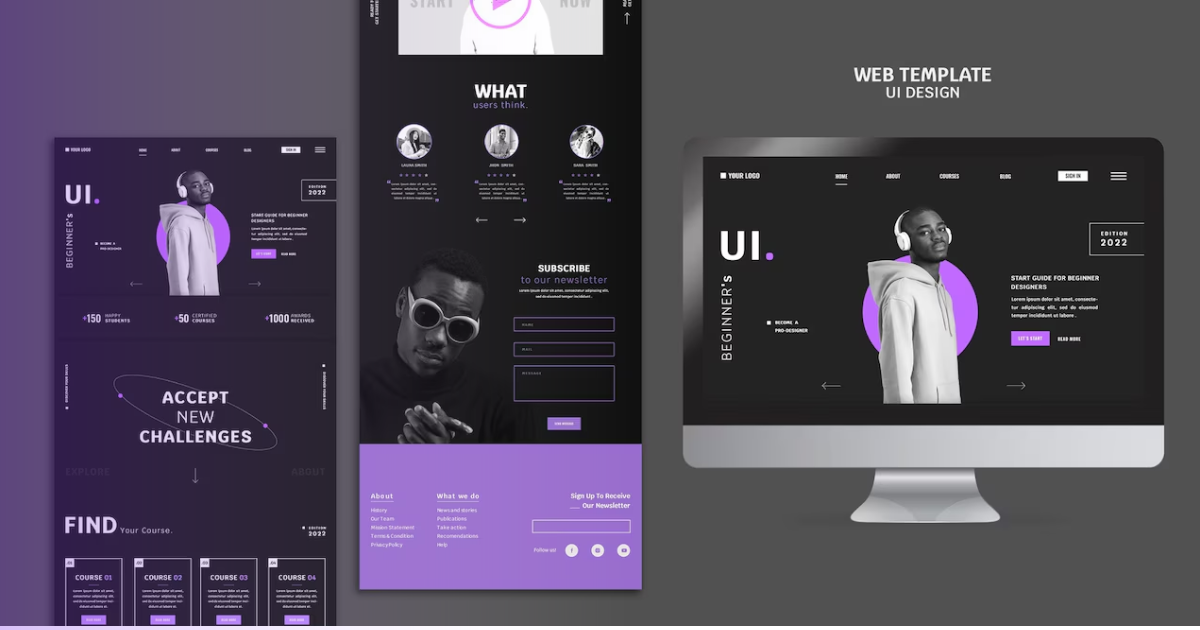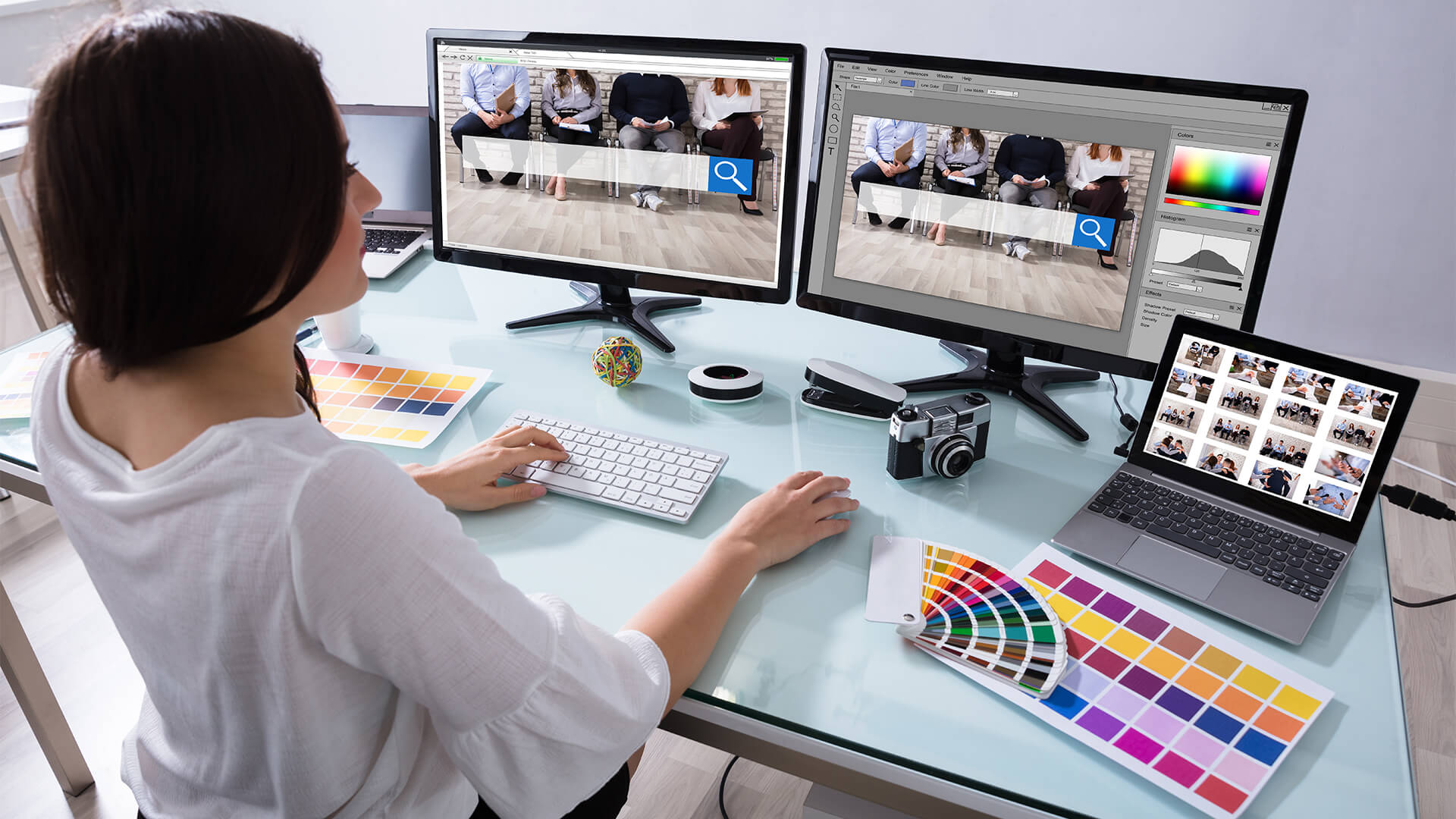The Most Effective Types of Website Design to Improve Individual Experience and Interaction
In the ever-evolving landscape of digital communication, the effectiveness of website design considerably impacts user experience and interaction. Various design approaches, such as minimalist, responsive, and interactive designs, each deal distinct benefits that can satisfy diverse user demands. Understanding which types of website design best serve these objectives can be pivotal for organizations intending to improve consumer complete satisfaction and retention. The concern continues to be: which layout aspects truly resonate with individuals and foster significant involvement? The expedition of these concepts discloses essential insights that might redefine your strategy to Web style.
Minimalist Website Design
As electronic landscapes come to be significantly cluttered, minimalist Web layout has actually become an effective approach to improving user experience. This style philosophy prioritizes simplicity, concentrating on necessary aspects while eliminating unneeded interruptions. By making use of ample white room, straightforward navigating, and a minimal color palette, minimalist style cultivates clarity and guides customer interest to vital content.
The core concept of minimalist Web design is to create a seamless interaction for customers. By reducing cognitive lots, customers can swiftly understand details without really feeling overwhelmed. This straight technique not just enhances usability but additionally urges interaction, as site visitors are a lot more likely to discover a website that is easy and aesthetically attractive to browse.
In addition, minimalist design commonly stresses typography and imagery, making use of these aspects tactically to communicate messages successfully. In significance, minimal Web layout is not just a fad; it is a thoughtful method that acknowledges the value of user-centered design.
Receptive Website Design
In today's diverse digital setting, responsive Web style has actually become vital for developing a smooth individual experience throughout a wide variety of tools. As customers access web sites on smart devices, laptop computers, tablet computers, and desktops, the ability of a web site to adjust its design and web content to different display dimensions and resolutions is important.
Responsive Web style employs versatile grids, pictures, and CSS media inquiries to ensure that Web content exists ideally, regardless of the device utilized. This approach not just boosts the visual appeal of a web site but additionally substantially enhances usability. Users are much more most likely to involve with a website that uses a regular experience, as it eliminates the disappointment of needing to focus or scroll exceedingly.
In addition, internet search engine, including Google, prioritize mobile-friendly web sites in search positions. By embracing receptive style, organizations can improve their presence and get to a more comprehensive audience. This technique also streamlines internet site maintenance, as a single version of the site can deal with all tools, minimizing the need for multiple variations. In recap, responsive Web style is a basic method that boosts user experience, interaction, and overall satisfaction.
Interactive Website Design
Receptive Web design lays the groundwork for enhancing customer experience, yet interactive website design takes this an action better by involving customers in a much more vibrant way - Aligned Position Web Design. By including components such as computer animations, clickable prototypes, and real-time feedback, interactive click over here website design astounds customers, attracting them into a richer surfing experience
This method not just cultivates involvement however additionally encourages customers to discover content actively as opposed to passively eating it. Techniques such as gamification, where individuals earn rewards for finishing tasks, can substantially boost the moment invested in a website and boost total complete satisfaction. Interactive features can streamline complex information, making it much more delightful and digestible.

Integrating interactive layout components can additionally result in higher conversion prices, as users are more probable to involve the original source with a site that proactively involves them. Aligned Position Web Design. Eventually, interactive website design transforms user experiences into remarkable journeys, guaranteeing that visitors return time and once more
Apartment Design
Characterized by its minimalistic technique, flat layout emphasizes simplicity and capability, removing unneeded aspects and concentrating on important functions. This style approach focuses on functionality, guaranteeing that customers can navigate user interfaces effortlessly and effectiveness. By employing a tidy visual, level layout eliminates the mess frequently located in a lot more elaborate designs, thereby enhancing customer concentrate on web content and performance.
The hallmark of level style depends on its use vibrant colors, basic typography, and geometric forms. These components add to an aesthetically appealing interface that is both friendly and contemporary. Furthermore, flat design promotes a feeling of quality, allowing individuals to recognize necessary actions and info without disturbance.
In addition, level layout is specifically efficient in receptive Web layout, as its simpleness converts well throughout different gadgets and display sizes. By focusing on essential attributes, level layout not just meets individual requirements yet likewise urges smooth communication, making it an important component of effective Web layout approaches.
Flexible Web Layout
Adaptive Web layout personalizes the customer experience by creating multiple taken care of formats tailored to different screen dimensions and gadgets. Unlike receptive design, which fluidly readjusts a solitary format, adaptive design utilizes distinctive formats for certain breakpoints, making certain optimum discussion on various systems. This technique enables designers to focus on the unique qualities of each device, boosting use by delivering precisely what customers require based upon their context.
One of the key benefits of flexible website design is its capability to try this enhance tons times and performance. By serving customized material and photos that fit the individual's gadget, internet sites can reduce information usage and improve loading speeds. This is specifically valuable for customers with slower connections or restricted information strategies.

Additionally, flexible design facilitates an extra regular and regulated branding experience. Because developers create numerous formats, they can ensure that the aesthetic aspects straighten with the brand name's identification throughout various systems - Aligned Position Web Design. This leads to a cohesive user experience, enhancing interaction and advertising individual retention
Verdict
Finally, the combination of minimal, receptive, and interactive Web layout principles dramatically boosts user experience and engagement. Minimalist style cultivates quality and focus, while responsive layout makes certain versatility across various gadgets, promoting availability. Interactive style astounds individuals via dynamic elements, encouraging exploration and personalization. Collectively, these style approaches add to the development of user-friendly atmospheres that not just boost contentment however also drive higher conversion prices, underscoring their vital relevance in contemporary website design methods.

Minimalist style cultivates quality and emphasis, while responsive design makes sure flexibility throughout various tools, promoting ease of access. Collectively, these style approaches contribute to the creation of straightforward atmospheres that not just enhance fulfillment but also drive higher conversion rates, highlighting their crucial significance in modern Web design methods.